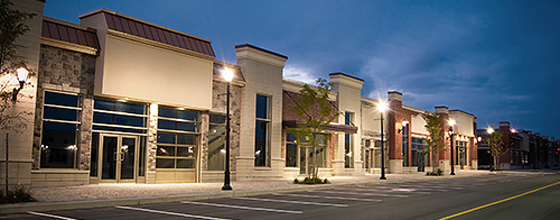The design of commercial organizations inside of companies brings unique organization alignment challenges for executives and practitioners alike. Because most sales and marketing functions touch the end-customer in very real and tangible ways, the design of these functions must create an extraordinary experience for customers and also deliver differentiated marketplace value for the company. Organization design choices for commercial organizations must therefore be made with marketplace differentiation in mind.
There are four key points to consider when deciding how to deliver differentiation through organization design for commercial organizations: positioning, segmentation, avoiding complexity, and sales behavior.
Market Positioning
While cost effectiveness and efficiency are always important considerations, commercial organizations must find ways to touch customer decision makers on an emotional level, creating some “magic” for them by representing the company’s distinctiveness in memorable and meaningful ways. The first key to the design of a commercial function or organization is to be very clear on the marketplace positioning – how does the company intend to win in the eyes of the customer. Questions like the following can help to clarify positioning and facilitate marketplace differentiation:
- How will you win in the eyes of your customers?
- What do your targeted customers need, and how do you distinctively fulfill those needs?
- How do you want your customers to access your products or services?
- What are your tradeoffs: do you need to omit or cut back on some of the goods or services you offer in order to do better elsewhere?
- How can you structure pricing that represents your organization’s distinct set of offerings and that will fit into the customer’s expectations?
In formulating answers to these questions, strive to create an extraordinary experience for all customers, showing them that they matter by delivering on promises of “something extra” that differentiates you from your competition. Our ANCHOR tool is an invaluable resource for helping companies zero in on customer needs and desires in order to provide differentiated value.
Market Segmentation
It’s easy to think that all retail and commercial customers are the same, but it’s not true. Most businesses cater to three to five main customer personas, each one of which may respond best to a different point of market differentiation. Evaluating what is unique about each group can help you determine how best to market to each. This requires getting specific about the traits of your customers. What do you know about them? Some people shop with a mission; they need a specific item, nothing more. Others need guidance and help in deciding which product best fits their needs. Still others are working on a more professional level; they may have limited time, an agenda, and their own market to satisfy. Differentiating your brand to appeal to these different customer types may require techniques such as designing your store or channels to fit the needs of multiple personas, or training your sales staff to work with customers based on their unique needs.
Streamlining Complexity
Another challenge common to commercial organizations is the issue of complexity. This can show up in various ways, such as an extensive product portfolio or a large number of customer personas with differing needs. A commercial organization must determine how to respond to the complexity of the market in ways that do not themselves become so complicated that they hinder efficiency or detract from the customer experience. This requires analyzing what can be grouped together and combined, versus what needs to be separate and distinct.
For example, one industrial manufacturing company I worked with had grown through acquisition and over the years had expanded their product portfolio to include thousands of products. Because of the complexity of the portfolio, any given customer of this company might have had multiple people buying products from all across this organization, from engineers or executives making big strategic purchases to a front-line maintenance supervisor ordering a replacement part. Some customers ended up interacting with no less than nine different sales people in this company, which naturally led to confusion about who was the point of contact between organizations.
Part of what we did in the project was to help them look for buying patterns within their product offerings where we could group and cluster products, services, and solutions together in simpler ways that better served both the company and its customers. This process of simplification both saved my client money and helped to jumpstart sales growth.
Keeping Sales Behavior Aligned
When the simplification process is applied to sales, a commercial organization must be conscious of the sales or customer-facing behavior that needs to happen. For example, we worked with a client that had two divisions. Because they had very different customer personas, these two divisions had two distinct ways of selling. One took a transactional approach to product sales: “Do you want A, B, or C?” The other division took a more consultative approach: “Let me come out to see how things work and put together a solution that works best for you.”
In an attempt to increase efficiency, the company decided to combine the two sales forces. However, they didn’t take into account that many of the salespeople were only skilled in one way of selling, and did not know how to sell to customers who did not fit their accustomed persona. To avoid losing sales and customers, an organization considering changes in salesforce configurations may need to consider other aspects of the organization’s design besides just the structure (e.g., work processes, metrics, training and skills, etc.).
Differentiating Through Design
Achieving the differentiation necessary for successful commercial organization design requires that an organization takes these four considerations into account. Making sure that each team member understands what makes their company unique in the eyes of your customers, and how to deliver differentiation according to their role, will go a long way towards positioning your commercial organization in a way that your target customer perceives you as different from—and better than—your competition.






